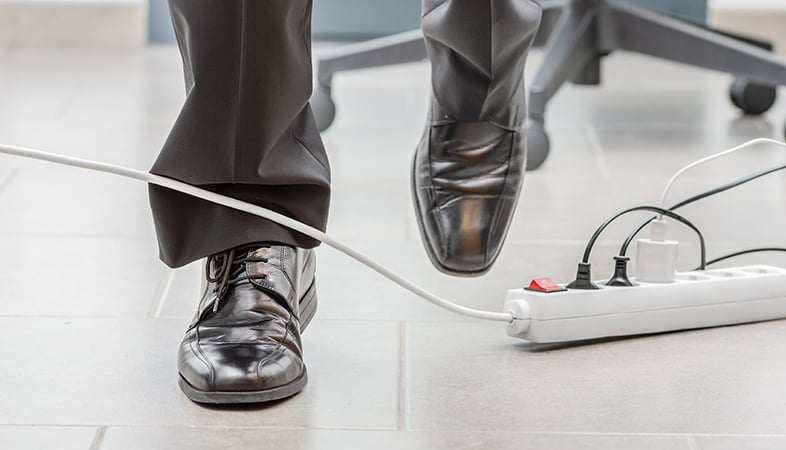What are office safety hazards?
|
|
You may think working in a comfy, climate-controlled office is safe and hazard-free, but there can be risks to your safety and health. Office workers suffer numerous injuries or work-related health problems each year.
Slips and trips are the most common office accident, accounting for the greatest number of injuries, according to the National Safety Council (NSC). Other office hazards include sprains and strains, poor workstation ergonomics, indoor air-quality problems, insufficient or excessive lighting, noise, fire and electrical hazards.
|
How to identify office safety hazards
|
|
Being aware of dangers is the first step in eliminating them and reducing the odds of injuries occurring. HSE teams can implement processes to identify dangers and correct problems, including instituting safety walkthroughs, setting up a formal reporting system for unsafe conditions and conducting training sessions on correcting safety hazards. Routine office inspections could reduce this danger.
|
How to prevent office safety hazards
|
|
Most common office hazards include:
- Slips, trips and falls: Clean up all spills immediately, and post signs identifying hazards in areas that are being cleaned or that have recently been cleaned, and in areas prone to water accumulation and wet surfaces. Office walkways should be kept clear, as boxes and other clutter can create a trip hazard
- Ergonomic injuries: A variety of adjustable chairs, desks, keyboards, etc., should be offered to accommodate the widest range of work styles. Employees should be trained how to set up and operate adjustable equipment for the best workstation fit
- Eye strain: Cut down on excessive glare by closing blinds on windows and dimming the overhead lights. Correctly positioning monitors slightly below eye level, minimizing screen glare and increasing computer font size all can help alleviate eyestrain. To reduce eye strain and fatigue, OSHA recommends taking a 10-minute break for every hour you spend looking at a computer screen, giving your eyes a rest and focusing on things at varying distances
- Fire safety: Power cords should be inspected regularly for wear and be replaced if they are frayed or have exposed wire, cords should never overload outlets. It’s also critical that employees be trained on what to do if a fire erupts
- Indoor air quality: The office’s air quality can be greatly improved by proper maintenance, cleaning and filtration of the ventilation, heating and air conditioning system. Cleanliness and orderliness, too, may prevent the spread of illnesses and diseases in the workplace
|
